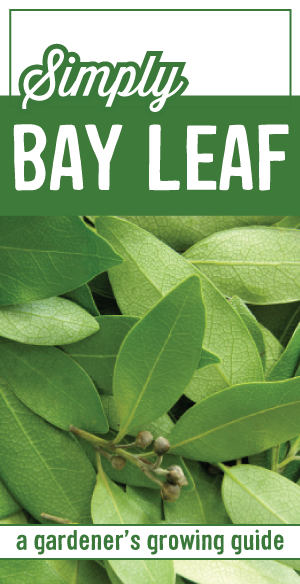
Scientific Name: Laurus nobilis
Order: Laurales
Family: Lauraceae
Genus: Laurus
Plant Type: Herb
USDA Hardiness Zones: 5-9
Soil pH Level: 4.5 - 8.3
Soil Texture: Well-Drained & Sandy
Sun Exposure: Full
Appearance Description: Bay leaves are fragrant leaves that form small fruits when completely mature. Fresh bay leaves are dark green on top and lighter underneath. When dried, they turn olive green.
How to Plant:
1. Work the soil until it has a smooth and broken-up consistency.
2. Amend native soil with compost, manure, or any other material.
3. Bay leaf thrives in vermiculite-amended and cactus soil.
4. Purchase a large plant if possible; bay leaf plants grow slowly.
How to Maintain:
1. Water regularly but not so much that soil is consistently wet.
2. Fertilize with an all-purpose fertilizer during the growing season.
How to Harvest:
1. Harvest bay leaf at any time of year.
Storage Tips:
Use as soon as harvested or preserve by freezing or drying. If bay leaf is dried, discard after a year.
Top Varieties:
1. Angustifolia
2. Aurea
3. Crispa
4. Undulata
5. Variegata
Fun Facts:
1. When completely mature, bay leaf produces fruits that attract birds.
2. Bay leaves aren't eaten, but instead simmered in sauces.
3. Bay leaves are thought to go perfectly with chicken, pork, beef, and seafood.
4. During ancient times, bay leaves were thought to alleviate bee stings.
Related Soil:
Schultz Moisture Plus Potting Mix
Related Plant Food:
Schultz All Purpose Water Soluble
Schultz Flower & Vegetable Extended Feed
Schultz All Purpose Extended Feed
Schultz Granular Tomato & Vegetable Plant Food
Schultz Granular All Purpose Plant Food






